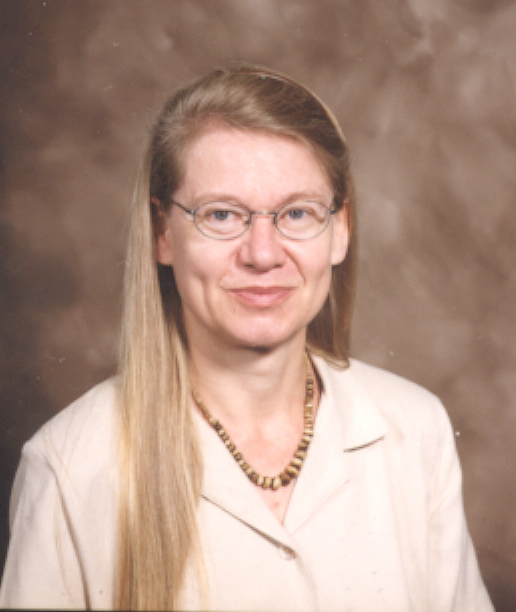Ludewig G.,
A. Gagliardi, R.K. Munn, D.C. Collins (1997). Effects of somatostatin
analogues and tamoxifen on angiogenesis in vivo and endothelial cells
in vitro. 88th Annual Meeting of the American Association for Cancer Research,
San Diego, CA (USA), Abstract # 1380
Ludewig G.,
G.G. Oakley, P. Espandiari, ande L.W. Robertson (1996). Production of
superoxide and DNA strand breaks by diol metabolites of lower chlorinated
biphenyls (PCBs). 87th Annual Meeting of the American Assoc. Cancer Res.,
Washington, DC (USA), Abstract #989
Ludewig G.,
Y. Li, and C. Staben (1995). Role of drug accumulation and efflux transporters
in fungal pentamidine susceptibility. 18th Fungal Genetics Conference,
Pacific Grove, CA, in: Fungal Genetics Newsletters
Amaro A.R., U. Bauer, G.
Ludewig, and L.W. Robertson (1995). Chlorinated dihydroxybiphenyls
and quinones: synthesis, reactivity, and cytotoxicity studies. The
Toxicologist; 15, p. 50.
Ludewig G.
and C. Staben (1994). Characterization of the PNT1 pentamidine resistance
gene of Saccharomyces cerevisiae; Antimicrob. Agents Chemother. 38,
2850-2856. abstract
Ludewig G.
and C. Staben (1994). Sensitivity of taxonomically diverse fungi to pentamidine
isethionate, J. Eukaryot. Microbiol. 41, 103S.
Ludewig G.,
Y. Li, J.M. Williams and C. Staben (1994). Effects of Pentamidine Isethionate
on Saccharomyces cerevisiae. Antimicrob. Agents Chemother. 38,
1123-1128. abstract
Ludewig G., S.
Dogra, F. Setiabudi, A. Seidel, F. Oesch and H.R. Glatt (1991). Quinones
derived from polycyclic aromatic hydrocarbons: induction of diverse mutagenic
and genotoxic effects in mammalian cells. in: Polynuclear Aromatic
Hydrocarbons, M.Cooke, K.Loening, and J. Merrit (Eds.), Bartelle Press,
545-556.
Ludewig G.,
S. Dogra and H.R. Glatt (1989): Genotoxicity of 1,4-benzoquinone and 1,4-naphthoquinone
in relation to effects on glutathione and NAD(P)H levels in V79 cells.
Environmental Health Perspectives 82, 223-228. abstract
Glatt H.R., R. Padykdula, G.A.
Berchtold, G. Ludewig, K.L. Platt, J. Klein and F. Oesch
(1989). Multiple activation pathways of benzene leading to products with
varying genotoxic characteristics. Environm. Health Perspect. 82,
81-89. abstract
Ludewig G.
and H.R. Glatt (1988). Suppression of the appearance of 3-methylcholanthrene
induced foci in C3H 10T1/2 cells by continuous post-treatment with dimethylsulfoxide,
but not by acetone and ethanole. Naunyn-Schmiedeberg's Archives of
Pharmacology, Suppl. to Vol. 337, R33.
Oesch F., B. Janik-Schmitt,
G. Ludewig, H.R. Glatt, R. Wieser (1987). Glutaraldehyde-fixed
transformed and non-transformed cells induce contact-dependent inhibition
of growth in non-transformed C3H/10T1/2 mouse fibroblasts, but not in
3-methylcholanthrene-transformed cells.Eur. J. Cell Biol. 43(3),
403-407. abstract
Ludewig G.
and H.R. Glatt (1986). Mutations in bacteria and sister chromatid exchanges
in cultured mammalian cells are induced by different metabolites of benzene.
Naunyn-Schmiedeberg's Archives of Pharmacology, Supplement to Vol.
332,. R21.
Glatt H.R., G. Ludewig,
K.L. Platt, F. Waechter, I. Yona, S. Ben-Shoshan, P. Jerushalmy, J. Blum,
F.Oesch (1985): Arene Imines, a new class of exceptionelly potent mutagens
in bacterial and mammalian cells. Cancer Res. 45,
2600-2607.
